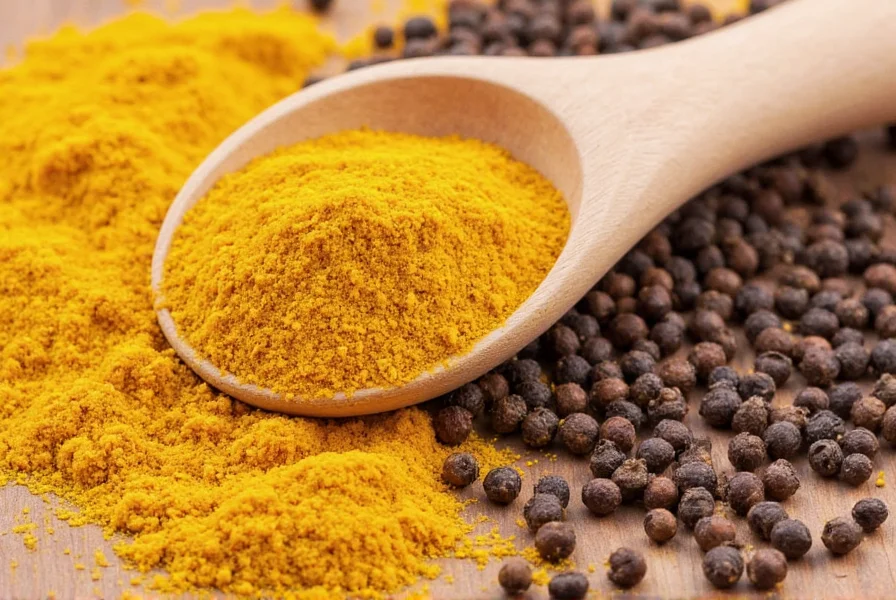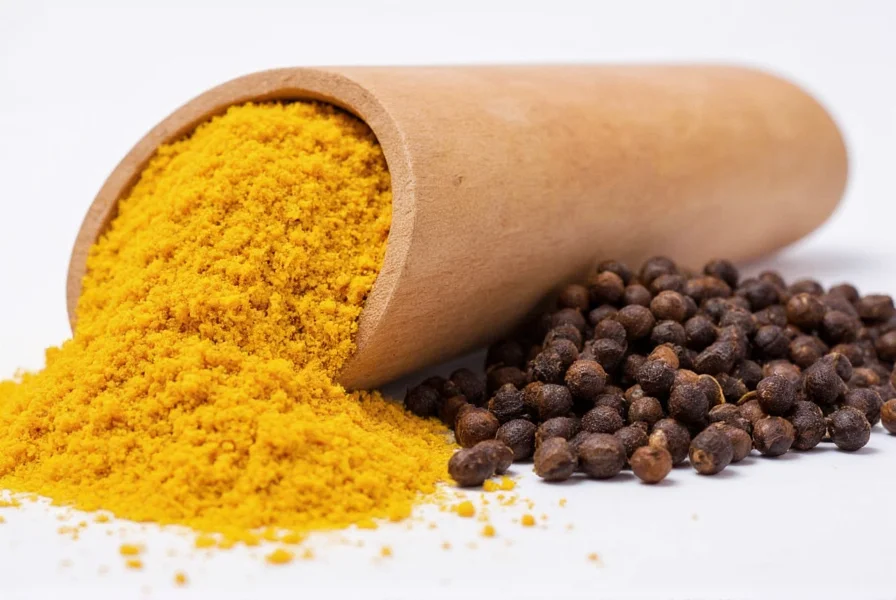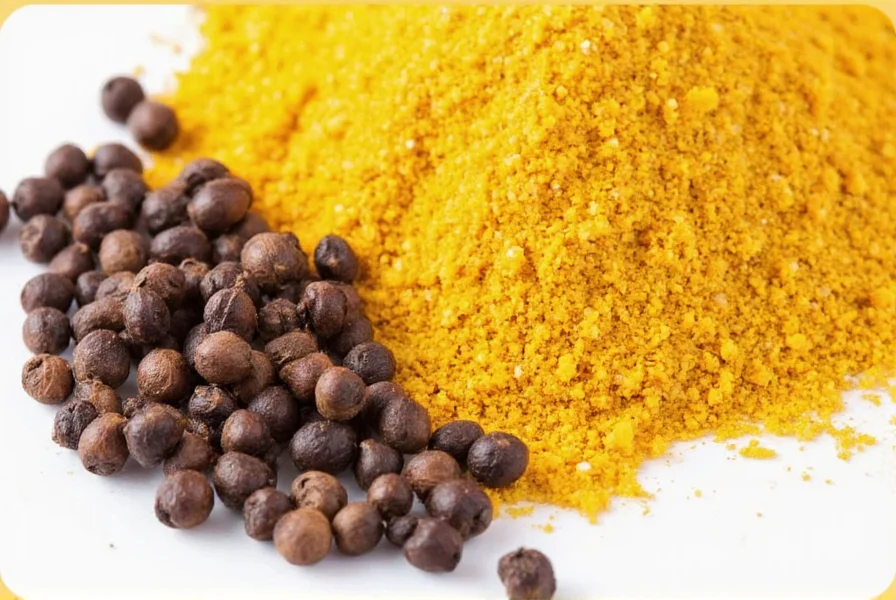When exploring the ancient pairing of haldi and black pepper, modern science has validated what traditional medicine systems like Ayurveda have practiced for centuries. Turmeric contains curcumin, a potent anti-inflammatory compound, but its poor bioavailability has limited its effectiveness. Black pepper's piperine component solves this critical issue by inhibiting certain metabolic processes that would otherwise rapidly eliminate curcumin from the body.
The Biochemical Synergy Explained
Curcumin, despite its impressive health properties, faces significant challenges with absorption and metabolism. When consumed alone, curcumin has extremely low bioavailability due to:
- Rapid metabolism in the liver and intestinal wall
- Poor solubility in water
- Quick systemic elimination
Research published in Planta Medica demonstrated that combining just 20mg of piperine with 2g of curcumin increased curcumin bioavailability by 2,000%. This dramatic enhancement occurs because piperine inhibits hepatic and intestinal glucuronidation—the process that makes curcumin water-soluble for excretion.

Evidence-Based Health Benefits
The haldi and black pepper combination delivers enhanced benefits compared to turmeric alone:
| Benefit Category | With Black Pepper | Without Black Pepper |
|---|---|---|
| Anti-inflammatory effects | Significantly enhanced reduction in inflammatory markers | Mild to moderate effects |
| Antioxidant capacity | 2-3x greater free radical scavenging activity | Standard antioxidant activity |
| Joint health support | Clinically significant pain reduction in osteoarthritis studies | Minimal measurable effects |
| Brain health support | Increased BDNF levels observed in human trials | Insufficient concentration for measurable effects |
Traditional Wisdom Meets Modern Science
Ayurvedic practitioners have combined haldi and black pepper for thousands of years, long before modern science understood why this pairing works. Traditional formulations like Trikatu (a blend of black pepper, long pepper, and ginger) were designed to enhance the bioavailability of medicinal herbs. Contemporary research now confirms that this traditional knowledge had a solid biochemical foundation.
Studies examining traditional Indian cuisine reveal that many turmeric-containing dishes naturally include black pepper, suggesting an evolved culinary practice that maximizes nutritional benefits. This represents one of many examples where traditional food wisdom aligns with modern nutritional science.
Practical Application Guidelines
To maximize the benefits of haldi and black pepper in your diet:
- Use the right ratio: A 1:10 to 1:20 ratio of black pepper to turmeric (by weight) provides optimal enhancement without overwhelming flavor
- Include healthy fats: Curcumin is fat-soluble, so consume with healthy fats like coconut oil or olive oil
- Heat appropriately: Gentle heating (as in cooking) improves curcumin solubility without degradation
- Timing matters: Consume with meals to enhance absorption and reduce potential stomach irritation

Safety Considerations and Limitations
While the haldi and black pepper combination offers significant benefits, important considerations include:
- People taking blood thinners should consult physicians before consuming therapeutic amounts of turmeric
- Those with gallbladder issues may experience discomfort with high turmeric intake
- Piperine can affect the metabolism of certain medications including some antidepressants and antihistamines
- The enhanced absorption applies specifically to curcumin, not necessarily to other compounds in turmeric
Research indicates that while the bioavailability enhancement is substantial, the absolute amount of curcumin absorbed remains relatively low. For example, even with piperine, only about 5-10% of consumed curcumin enters systemic circulation. This explains why many clinical studies use high doses (500-2,000mg daily) of curcumin to achieve therapeutic effects.
Maximizing Your Turmeric Consumption
For those seeking the maximum benefits from haldi and black pepper, consider these evidence-based approaches:
- Golden milk: Combine 1/2 teaspoon turmeric, 1/8 teaspoon black pepper, and 1 cup milk (dairy or plant-based) with a teaspoon of healthy fat
- Culinary applications: Add black pepper to any turmeric-containing dish, especially curries, soups, and roasted vegetables
- Supplement considerations: If using supplements, choose formulations that specifically include piperine or state enhanced bioavailability
- Daily incorporation: Consistent daily consumption yields better results than occasional high doses due to curcumin's cumulative effects
The scientific validation of this ancient spice pairing demonstrates how traditional food knowledge often contains valuable wisdom that modern research continues to uncover. By understanding the biochemical rationale behind combining haldi and black pepper, we can make more informed choices about incorporating this powerful duo into our daily nutrition routines.
Frequently Asked Questions
How much black pepper should I use with turmeric for maximum absorption?
Research indicates that just 1/20th of a teaspoon of black pepper (approximately 5-10mg of piperine) is sufficient to significantly enhance curcumin absorption when combined with 1-1.5 teaspoons of turmeric. This small amount provides the bioavailability boost without overpowering the flavor of your dish.
Can I use white pepper instead of black pepper with turmeric?
No, white pepper does not provide the same enhancement as black pepper. The critical compound piperine is found in much higher concentrations in black pepper (5-9%) compared to white pepper (1-2%). For optimal curcumin absorption, black pepper is specifically required due to its higher piperine content.
Does the black pepper and turmeric combination help with inflammation?
Yes, multiple clinical studies show that the combination significantly enhances turmeric's anti-inflammatory effects. Research published in the Journal of Medicinal Food found that subjects consuming curcumin with piperine experienced 3-4 times greater reduction in inflammatory markers compared to curcumin alone, with effects comparable to some non-steroidal anti-inflammatory drugs but without the side effects.
How long does it take to feel benefits from combining haldi and black pepper?
Most people notice subtle improvements in joint comfort and reduced inflammation within 2-4 weeks of consistent daily consumption. However, significant clinical improvements in conditions like osteoarthritis typically require 8-12 weeks of regular use. The benefits are cumulative, so consistent daily consumption yields better results than occasional high doses.
Can I take turmeric with black pepper if I'm on medication?
Piperine can affect how your body metabolizes certain medications, potentially increasing their concentration in your bloodstream. If you're taking medications metabolized by the CYP3A4 or P-glycoprotein pathways (including many blood thinners, antidepressants, and chemotherapy drugs), consult your physician before regularly consuming turmeric with black pepper. The combination is generally safe for most people but requires caution with specific medication regimens.











 浙公网安备
33010002000092号
浙公网安备
33010002000092号 浙B2-20120091-4
浙B2-20120091-4